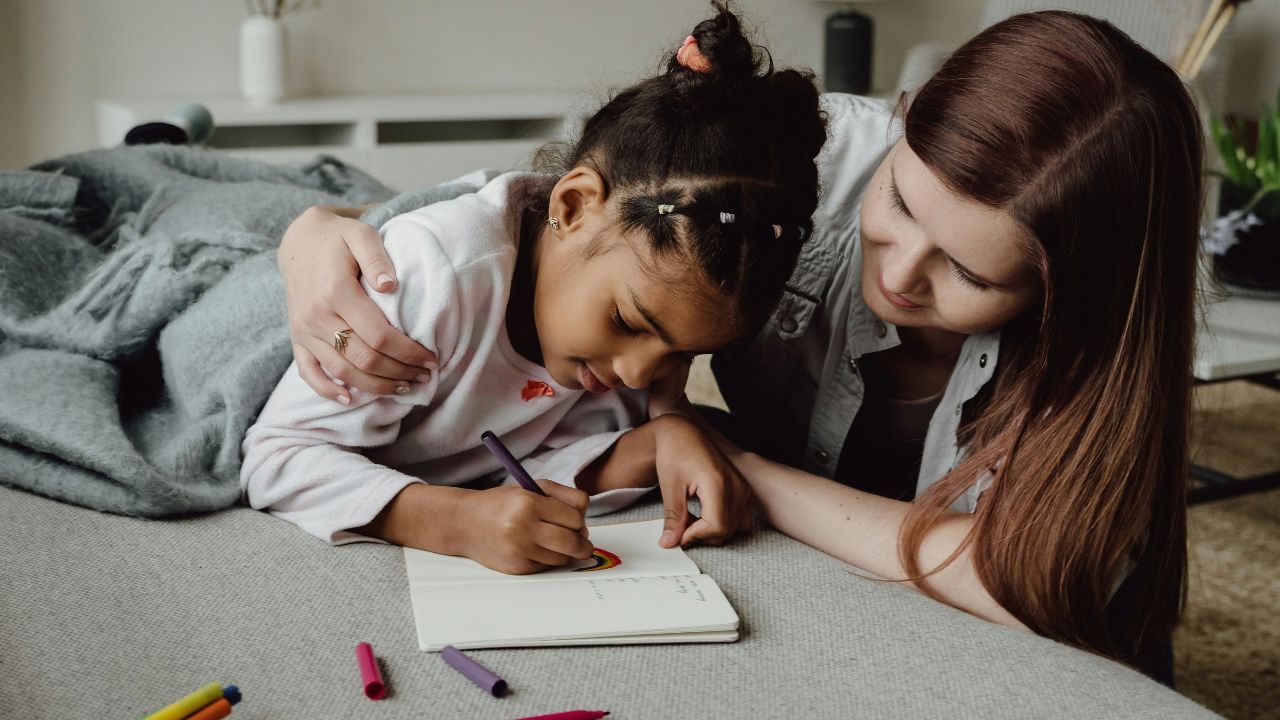Many parents and guardians have experienced the challenge of keeping their children engaged with learning. Some subjects can feel disconnected from everyday life, making it hard for learners to see how what they’re studying relates to the world around them.
Traditional schooling tends to compartmentalize learning into a set school day, along with some homework assignments. Home learning, on the other hand, is less about separation and more about integration. It’s designed for families who want to embrace learning as a lifestyle, not just a schedule.
In a home learning environment, learning and everyday life are fused together. Learning happens throughout the day; at home, out in the world, during everyday activities and in quiet moments. It’s a flexible, whole-family approach that supports learners in exploring their interests, building on their strengths and developing at their own pace.
Many SelfDesign families have embraced this unique model and shaped it to suit their lives. Their stories offer a glimpse into how self-directed learning fits into daily rhythms, family values, and the natural curiosity of children.
Learning as a family rhythm
SelfDesign parent Sylvia has helped guide her three children through the program since 2006. She emphasizes the rewards of a self-directed, flexible learning and how much the model has benefited her entire family.
“We have had the freedom both to dabble and to dive deep, to partake of the buffet of knowledge in the way that best suited each child,” she says. “We have enjoyed the gift of time, having the flexibility to volunteer in our community, join clubs, build things, play music, or just sit in the treehouse and muse on a sunny afternoon.”
And most of all, she says, “We have had each other. Our family’s bonds are strong and deep and permanent, because we had the precious opportunity to spend so much of our lives together all these years.”
Following your child’s lead
When children are encouraged to explore their individuality, learning unfolds in ways that match who they are. SelfDesign parent Christina Hagemann describes how her children are better off with their home learning lifestyle.
“The kid’s learning styles are better suited to a home environment,” says Christina. “They’re very quiet, and they don’t like to be in large, noisy groups. They also pick things up quickly, so being in a brick-and-mortar school could get boring for them.”
Christina oversees the learning curricula to make sure her children are on track, but ultimately, they are free to pursue whatever subjects keep their interest at a level that suits them. “From an academic standpoint, I love that they can go where they want to go. If my son wants to learn a program in Python, there’s nobody there saying no,” says Christina. “My daughter wants to learn how to multiply fractions, she can do that. She doesn’t have to wait to be in the right grade.”
The kids love doing science experiments, taking field trips, and participating in anything that makes learning a hands-on experience. “They both learn better that way.”
Christina also emphasizes how beneficial home learning has been for their family, who live in a rural setting. There are limited classes and activities for youth within their community, but with the flexibility and valuable resources provided by SelfDesign, her children can explore diverse interests and even pursue things like learning coding, which she wouldn’t have been able to teach on her own.
Flexibility that supports the whole family
Home learning invites families to co-create their days in a way that aligns with their values, energy levels and needs. That flexibility is a powerful tool in preventing burnout, not just for learners, but for parents too.
Slow mornings, downtime during the day, nature exploration and seeking community support are ways to cultivate balance and sustainability.
SelfDesign parent Cheryl Woodhouse, who has three children in SelfDesign, describes her family’s balance-promoting routine.
“I get to follow my body clock (circadian rhythm) and my children’s body clocks,” Cheryl says. “We don’t have a rigid schedule, and this means that our kids get to listen to their bodies more. They don’t have to wake up at the crack of dawn, rush out the door and stress their adrenals, which has meant a lot more peace and calm in our house.”
Nikki Kenyon, interim president and CEO of SelfDesign and home learning parent, shares a similar rhythm.
“When I would wake my children up in the morning, it would be a gentle, slow, connected engagement,” shares Nikki. “They would come and cuddle with me on the couch for 20 minutes. Sometimes we’d read a book before we did anything else. I was careful to schedule things so that we didn’t start any planned activities before 10 a.m. so that we could have those slow starts.”
Learning as a way of living
Home learning is about relationships, curiosity, and connection. It’s about creating a life where learning is woven into the fabric of every day, rather than treated as a separate task to check off.
At SelfDesign, we support families in making learning a lifestyle. With the guidance of experienced learning consultants, access to flexible and diverse resources, and a strong community network, families can create an environment where each child’s path is honoured and supported.
Whether your child is coding, reading in the treehouse, or exploring a science experiment on the kitchen table, learning can happen anywhere, anytime, with joy, connection and purpose at the heart of it all.







